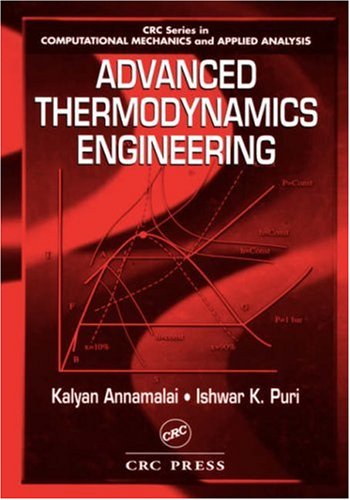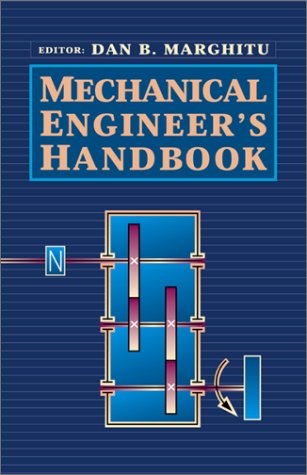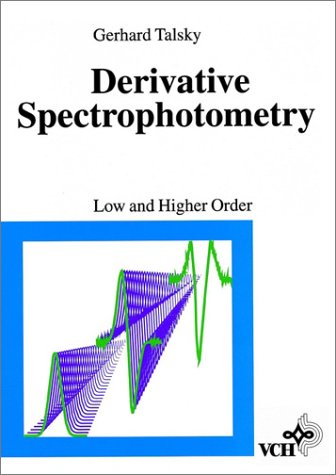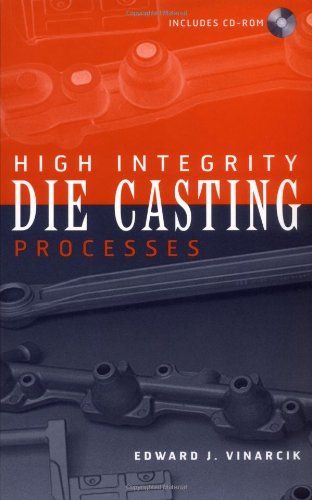Kalyan Annamalai, Ishwar K. Puri, Milind A. Jog0849325536, 9780849325533
Table of contents :
ADVANCED THERMODYNAMICS ENGINEERING……Page 3
PREFACE……Page 6
ABOUT THE AUTHORS……Page 8
NOMENCLATURE *……Page 9
Greek symbols……Page 10
Subscripts……Page 11
Acronyms……Page 12
Laws of Thermodynamics in Lay Terminology……Page 14
CONTENTS……Page 15
A.IMPORTANCE,SIGNIFICANCE AND LIMITATIONS……Page 27
Table of Contents……Page 0
a.System and Boundary……Page 28
b.Simple System……Page 29
c.Constraints and Restraints……Page 30
e.Phase……Page 31
g.Pure Substance……Page 32
i.Mixture……Page 33
j.Property……Page 34
k.State……Page 35
l.Equation of State……Page 36
n.Partial Pressure……Page 37
o.Process……Page 38
p.Vapor –Liquid Phase Equilibrium……Page 39
1.Explicit and Implicit Functions and Total Differentiation……Page 40
2.Exact (Perfect)and Inexact (Imperfect)Differentials……Page 42
i.Two Variables (x and y)……Page 44
3.Conversion from Inexact to Exact Form……Page 46
a.Work and Heat……Page 47
b.Integral Over a Closed Path (Thermodynamic Cycle)……Page 48
5.Homogeneous Functions……Page 49
ii.Intensive Property……Page 51
iv.Conversion of Extensive Into Intensive Properties……Page 52
7.LaGrange Multipliers……Page 54
8.Composite Function……Page 55
a.Stokes Theorem……Page 56
1.Matter……Page 57
2.Intermolecular Forces and Potential Energy……Page 58
b.Collision Number and Mean Free Path……Page 61
ii.Diatomic Gas……Page 64
4.Pressure……Page 65
a.Relation between Pressure and Temperature……Page 66
5.Gas,Liquid,and Solid……Page 68
6.Work……Page 70
7.Heat……Page 71
b.Single Component into Multicomponent……Page 72
a.Single Component Fluid……Page 73
b.Multiple Components……Page 74
10.Entropy……Page 75
E.SUMMARY……Page 80
ii.Work Done to Move an Electrical Charge……Page 81
c.Gradient of a Scalar……Page 82
d.Curl of a Vector……Page 83
b.Energy Conservation……Page 85
iii.Potential Energy……Page 86
v.Integrated Form……Page 87
vii.Coupled Systems……Page 88
c.Systems with Internal Motion……Page 89
ix.Cyclical Work……Page 90
xi.Rate Form……Page 91
e.Quasiequilibrium Work……Page 92
f.Nonquasiequilibrium Work……Page 94
g.First Law in Enthalpy Form……Page 98
xii.Internal Energy and Enthalpy……Page 99
xiii.Specific Heats at Constant Pressure and Volume……Page 101
xv.Polytropic Process……Page 103
a.Conservation of Mass……Page 105
xvi.Nonsteady State……Page 106
b.Conservation of Energy……Page 107
xx.Flow Work……Page 108
xxi.Nonsteady State……Page 109
xxv.Unit Mass Basis……Page 110
xxix.Steady State Steady Flow (SSSF)……Page 111
xxxi.Energy Conservation……Page 114
a.Heating of a Residence in Winter……Page 115
b.Thermodynamics of the Human Body……Page 116
c.Charging of Gas into a Cylinder……Page 118
d.Discharging Gas from Cylinders……Page 121
e.Systems Involving Boundary Work……Page 122
f.Charging of a Composite System……Page 124
a.Integral Form……Page 126
a.Integral Form……Page 127
c.Deformable Boundary……Page 128
1.Conservation Relations for a Deformable Control Volume……Page 129
1.Thermal and Mechanical Energy Reservoirs……Page 131
b.Heat Pump and Refrigeration Cycle……Page 132
1.Informal Statements……Page 133
a.Kelvin (1824-1907)– Planck ((1858-1947)Statement……Page 134
i.Perpetual Motion Machines……Page 135
1.Reversible and Irreversible Processes……Page 136
2.Cyclical Integral for a Reversible Heat Engine……Page 137
3.Clausius Theorem……Page 139
5.External and Internal Reversibility……Page 143
b.Characteristics of Entropy……Page 144
7.Relation between ds,dq and T During an Irreversible Process……Page 148
ii.Proof……Page 150
a.Uniform Temperature within a System……Page 151
b.Nonuniform Properties within a System……Page 154
2.Integrated Form……Page 156
4.Cyclical Form……Page 157
5.Irreversibility and Entropy of an Isolated System……Page 158
6.Degradation and Quality of Energy……Page 159
a.Adiabatic Reversible Processes……Page 160
E.ENTROPY EVALUATION……Page 161
a.Constant Specific Heats……Page 164
b.Variable Specific Heats……Page 165
2.Incompressible Liquids……Page 167
4.Entropy During Phase Change……Page 168
a.Gibbs –Dalton ´s law……Page 171
b.Reversible Path Method……Page 172
F.LOCAL AND GLOBAL EQUILIBRIUM……Page 173
G.SINGLE –COMPONENT INCOMPRESSIBLE FLUIDS……Page 174
H.THIRD LAW……Page 179
1.General Expression……Page 181
2.Evaluation of Entropy for a Control Volume……Page 186
3.Internally Reversible Work for an Open System……Page 190
4.Irreversible Processes and Efficiencies……Page 193
b.Differential Form……Page 194
a.Steady Flow……Page 195
b.Solids……Page 196
J.MAXIMUM ENTROPY AND MINIMUM ENERGY……Page 197
a.Entropy Maximum (For Specified U,V,m)……Page 198
b.Internal Energy Minimum (for specified S,V,m)……Page 205
c.Enthalpy Minimum (For Specified S,P,m )……Page 210
d.Helmholtz Free Energy Minimum (For Specified T,V,m)……Page 213
e.Gibbs Free Energy Minimum (For Specified T,P,m)……Page 214
2.Generalized Derivation for a Single Phase……Page 217
iv.No Thermal Constraint……Page 219
vii.Other Cases……Page 220
1.Proof for Additive Nature of Entropy……Page 221
2.Relative Pressures and Volumes……Page 222
a.U,V,m System……Page 223
viii.One Component……Page 224
ix.Multiple Components……Page 225
A.INTRODUCTION……Page 226
B.OPTIMUM WORK AND IRREVERSIBILITY IN A CLOSED SYSTEM……Page 227
a.Irreversibility or Gouy –Stodola Theorem……Page 228
1.Absolute and Relative Availability Under Interactions with Ambient……Page 229
2.Irreversibility or Lost Work……Page 232
a.Comments……Page 233
1.Optimum Work……Page 238
3.Availability Balance Equation in Terms of Actual Work……Page 240
a.Irreversibility due to Heat Transfer……Page 241
4.Applications of the Availability Balance Equation……Page 242
a.Multiple Reservoirs……Page 248
c.Mixtures……Page 249
7.Helmholtz Function……Page 251
b.Availability or Exergetic (Work Potential)Efficiency……Page 252
a.Coefficient of Performance……Page 256
b.Closed Systems……Page 259
4.Graphical Illustration of Lost,Isentropic,and Optimum Work……Page 262
F.CHEMICAL AVAILABILITY……Page 264
1.Closed System……Page 265
a.Ideal Gas Mixtures……Page 268
b.Vapor or Wet Mixture as the Medium in a Turbine……Page 271
c.Vapor –Gas Mixtures……Page 272
d.Psychometry and Cooling Towers……Page 273
1.Integral Form……Page 276
3.Some Applications……Page 277
H.SUMMARY……Page 281
B.CLASSICAL RATIONALE FOR POSTULATORY APPROACH……Page 282
1.Simple Legendre Transform……Page 284
a.Relevance to Thermodynamics……Page 286
2.Generalized Legendre Transform……Page 287
3.Application of Legendre Transform……Page 289
2.Elastic Work……Page 290
3.Surface Tension Effects……Page 291
5.Work Involving Gravitational Field……Page 292
1.Postulate I……Page 293
F.ENTROPY FUNDAMENTAL EQUATION……Page 294
H.INTENSIVE AND EXTENSIVE PROPERTIES……Page 295
I.SUMMARY……Page 297
B.EQUATIONS OF STATE……Page 298
1.Virial Equation of State……Page 299
a.Exact Virial Equation……Page 300
a.Clausius –I Equation of State……Page 301
b.VW Equation……Page 303
i.Comments……Page 305
3.Redlich –Kwong Equation of State……Page 307
4.Other Two –Parameter Equations of State……Page 308
5.Compressibility Charts (Principle of Corresponding States)……Page 313
b.Boyle Curve……Page 317
c.The Z =1 Island……Page 318
7.Deviation Function……Page 319
b.Pitzer Factor……Page 321
ii.Empirical Relations……Page 322
c.Peng –Robinson (PR)Equation……Page 323
10.Generalized Equation of State……Page 324
c.Modified BWR Equation……Page 325
a.Generalized State Equation……Page 326
d.Relation for Densities of Saturated Liquids and Vapors…….Page 328
1.Cubic Equation……Page 329
b.Case II:•







Reviews
There are no reviews yet.